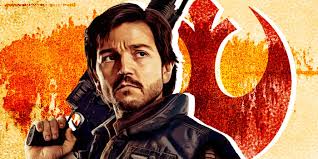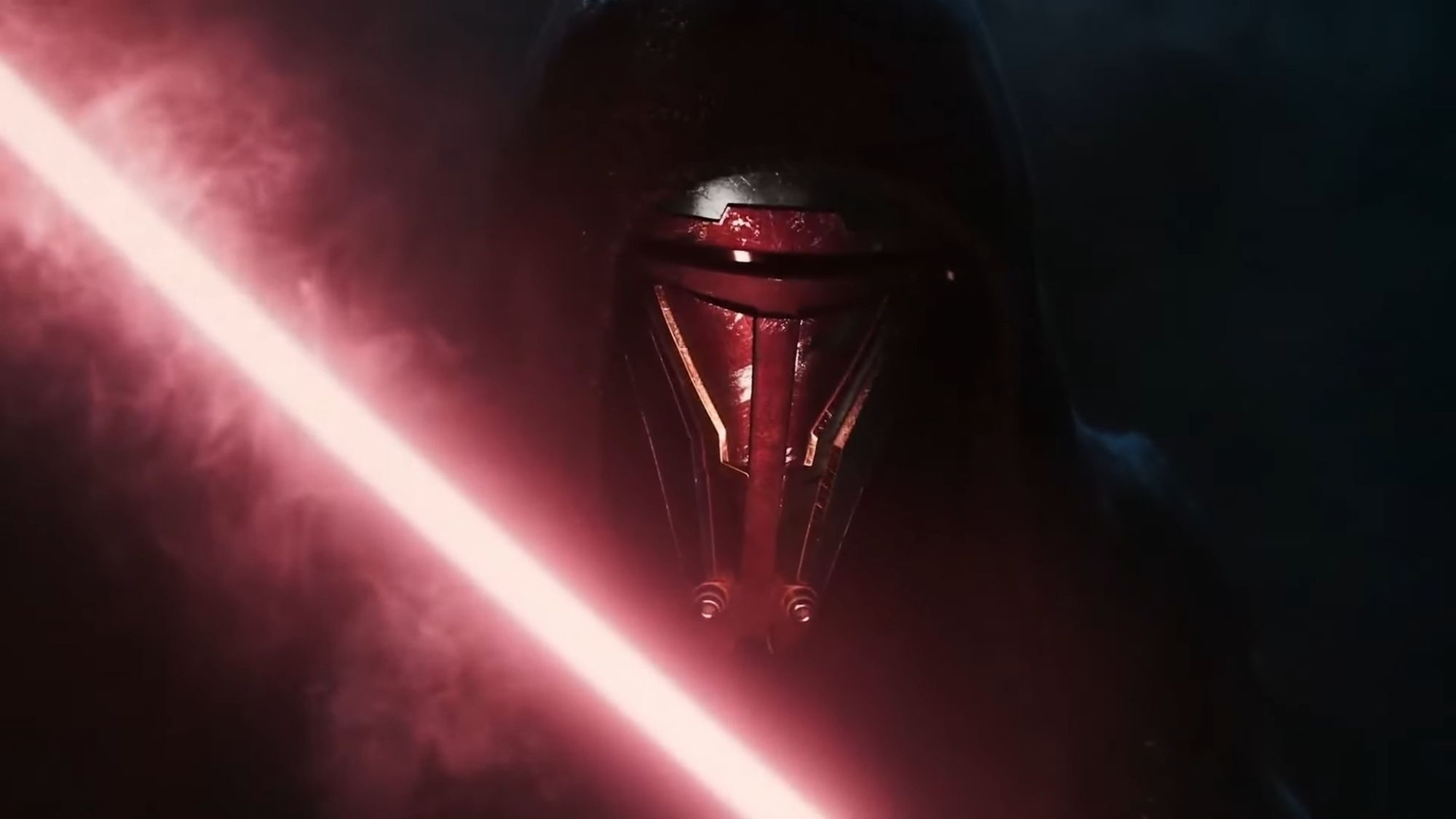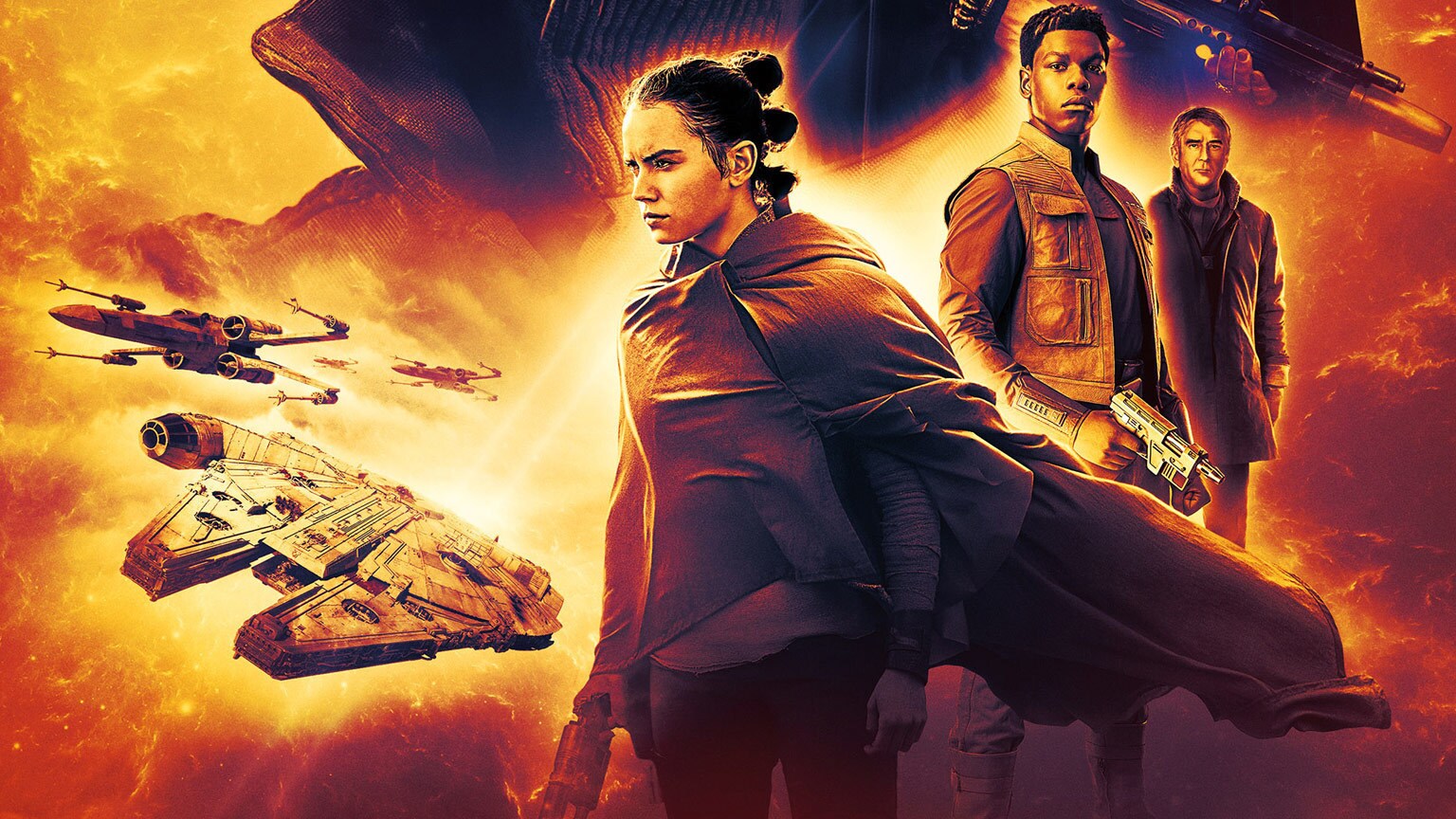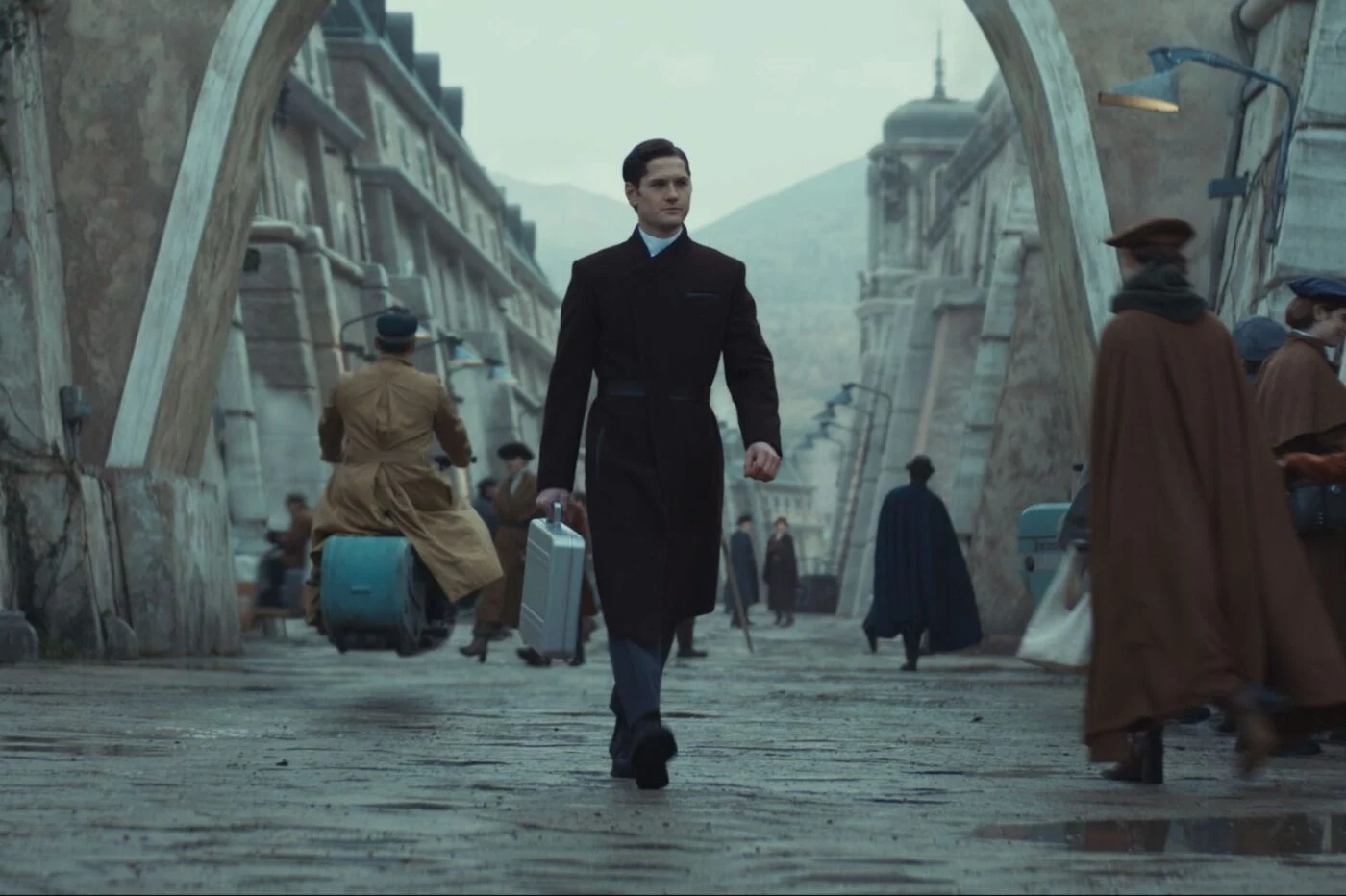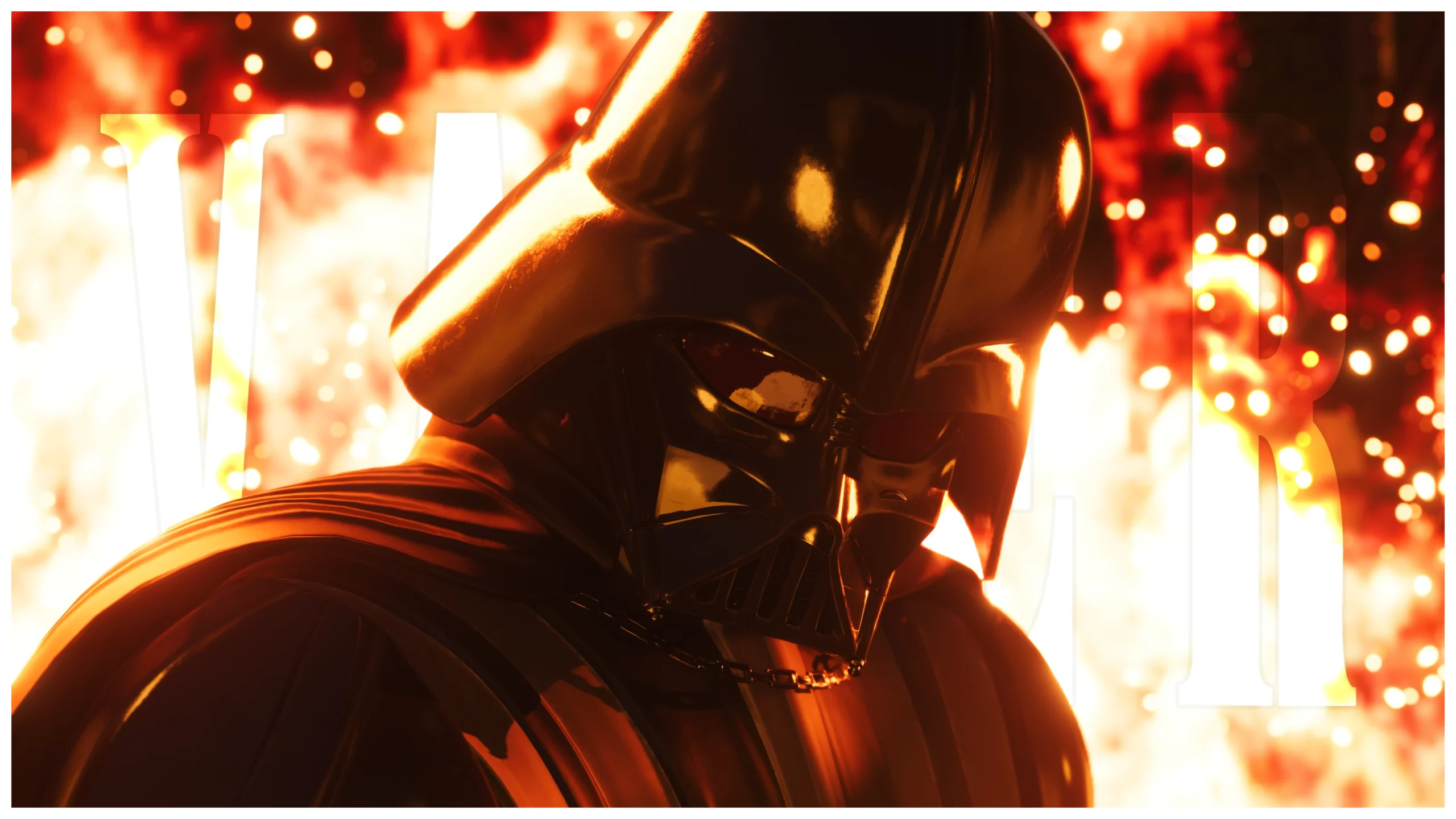Star Wars has never been short on heroes – from farmboys with destinies to mysterious Jedi and fearless princesses. But in a franchise often preoccupied with grand prophecies and Chosen One narratives, the Disney+ series Andor dared to shine the spotlight on the little guys. This show isn’t about Skywalkers or Palpatines; it’s about the everyday individuals who choose to resist tyranny, even when they don’t have Force powers or royal blood. In doing so, Andor introduced a new kind of Star Wars hero – one grounded in realism, moral ambiguity, and the power of ordinary people banding together.
The result? A story that feels at once refreshingly human and grippingly relevant. With a funny-yet-heartfelt touch, we’ll explore how Andor breaks the mold. From Cassian Andor’s journey from self-serving survivor to Rebel leader, to the unsung heroes of Ferrix who prove you don’t need a lightsaber to spark a rebellion, Andor expands what heroism means in a galaxy far, far away. Along the way, we’ll compare these characters and themes to those in Star Wars movies, comics, and games – and see why this new type of hero resonates so deeply with fans across the galaxy.
The Chosen Ones vs. the Everyman Heroes
In the original Star Wars films, heroes tended to fit a larger-than-life archetype. Luke Skywalker, for instance, was the chosen farmboy fated to master the Force and defeat the Empire. Rey in the sequel trilogy similarly discovers a grand destiny. Star Wars has often been “obsessed with ‘Chosen One’ narratives and mystical lineages,” as one commentator notes. We’re used to our Star Wars protagonists being gifted prodigies or secret royalty. But Andor flips that script by focusing on the unsung heroes – the kind of people who, in past stories, might have been background characters.
Andor takes place during one of the bleakest times in the galaxy, when Emperor Palpatine’s rule is absolute and hope is in short supply. The series shows us what the Rebel Alliance was really made of: not just noble Jedi and charismatic generals, but ordinary individuals pushed to the brink. These rebels are mechanics, fishermen, mothers, and outcasts who find their own ways to fight back against oppression. The Empire’s tyranny feels urgent and personal in Andor, and so does the heroism it evokes. Unlike the straightforward good-vs-evil of the original trilogy’s “scrappy underdogs led by larger-than-life heroes”, Andor lives in the moral grayness of real revolutions. Here, people don’t set out seeking adventure or glory – they’re driven by necessity, anger, and love for their homes.
Even the classic Star Wars heroes had a spark of this ordinary motivation. Remember, Luke’s journey in A New Hope kicks off not because a prophecy called him, but because the Empire murdered his aunt and uncle. That personal tragedy pushed him to rebel long before he learned about his Skywalker legacy. Andor takes that idea and runs with it, giving us a grounded look at how loss and oppression radicalize normal people. There’s no wise old Jedi appearing to guide Cassian Andor at first; instead, there’s trauma, injustice, and a slowly building fire of resistance. It’s a Star Wars story stripped of space mysticism – and it proves that the fight against evil doesn’t need the Force to be compelling.
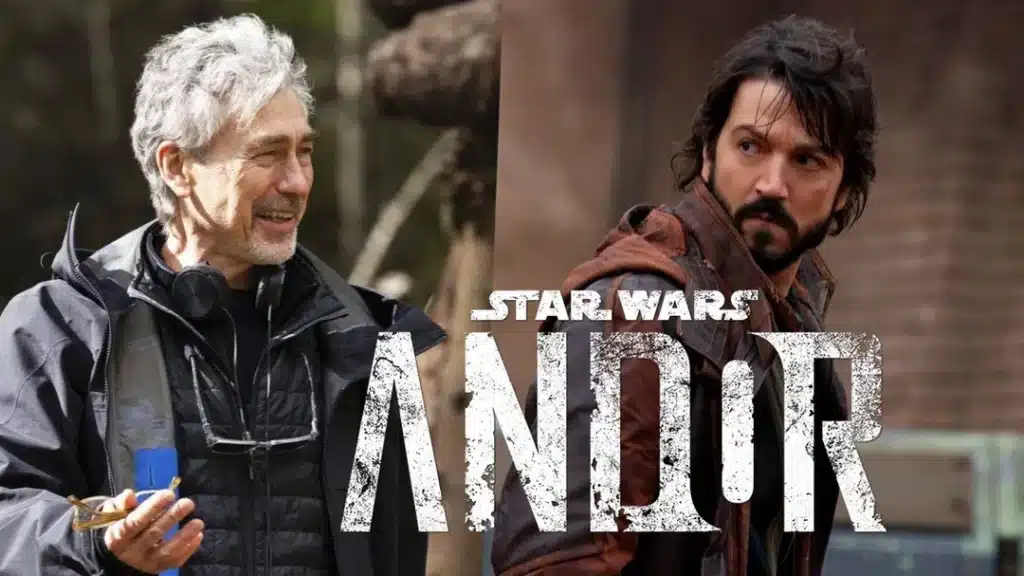
Cassian Andor: A Different Kind of Protagonist
Cassian Andor isn’t introduced as the sort of noble hero who would get a medal at Yavin. When we first meet Cassian in Andor Season 1, he’s a brash, self-interested survivor hustling to stay alive on the fringes of the galaxy. The official Star Wars site even notes that Cassian “isn’t the hero we know” at the start – he’s far from the legendary Rebel agent we meet in Rogue One. Instead of leading daring missions for the Rebel Alliance, this younger Cassian is skirting around corporate security forces, searching for his lost sister, and generally looking out for number one. The show’s very first scene drops us into a seedy backwater and shows Cassian making questionable choices (including a deadly altercation with two cops). It’s immediately clear that this is “a brand new kind of Star Wars story” – one where our protagonist starts at rock bottom.
So what makes Cassian a new kind of Star Wars hero? For one, he has no special powers or grand destiny. Cassian isn’t a Jedi with hidden Force potential; as actor Diego Luna has pointed out, Cassian is an ordinary person driven by conviction and passion rather than supernatural abilities. He’s essentially an “everyman” character – a talented but troubled guy who slowly finds purpose. In many ways, Cassian’s arc is the inverse of Luke Skywalker’s. Luke began as an idealistic farmboy dreaming of adventure, whereas Cassian begins as a cynic who’d prefer to avoid trouble. The brilliance of Andor is watching Cassian transform from that self-serving cynic into a selfless Rebel leader. It’s a gradual transformation, earned through harsh experiences and unlikely mentors.
Throughout Season 1, Cassian repeatedly insists he’s not a hero and tries to walk away from the fight. He even downplays his own talents, telling a friend at one point, “The only special thing about me is luck,”. But as the series (and Cassian’s journey) progresses, we see that isn’t true. Once Cassian starts making choices for the greater good – committing to the rebellion and fighting back against the Empire’s cruelty – his fortunes shift for the better. In other words, he stops needing luck because he’s making his own luck by doing the right thing. By the end of Season 1, Cassian willingly embraces the Rebel cause, telling Luthen Rael to take him in. The self-serving smuggler becomes a determined freedom fighter.
Series creator Tony Gilroy described Andor’s first season as “the making of a revolutionary.” Cassian is “someone who could care less about anything but himself, who, over the course of some months and a variety of really extreme circumstances, becomes incredibly radicalized,” Gilroy said. It’s a hero’s journey, but not the typical Campbellian arc of a chosen one discovering their power. Instead, it’s a political awakening. By the time of Rogue One, Cassian Andor is a rebel spy willing to give his life to destroy the Death Star – and Andor shows us how he got there, one hard choice at a time.
Crucially, Cassian’s humanity remains front-and-center. He’s not a spotless hero. He lies, he kills when cornered, and he wrestles with guilt and trauma. This makes him arguably one of the most relatable heroes in Star Wars. In the past, we’ve seen characters like Han Solo start cynical and turn altruistic, but even Han always had a roguish charm. Cassian is a more somber figure – haunted by his past and by the compromises he’s had to make. Yet, that’s exactly why he represents a new kind of hero for Star Wars. He reflects a truth often glossed over in high-fantasy adventures: revolutions aren’t led by perfect people, but by imperfect people motivated to do good despite their flaws. Cassian shows that heroism can be as much about moral courage and growth as it is about swinging a lightsaber.
The Unsung Heroes of Andor: When Ordinary People Rebel
Cassian may be the title character, but one of Andor’s strengths is how it spotlights a whole community of everyday heroes. The show is populated with characters who don’t fit the usual hero mold – many of them would never consider themselves “heroes” at all. They’re just doing what they believe is right, often at great personal risk. In Andor, heroism is truly a team effort, emerging organically from regular folks choosing solidarity against tyranny. Let’s look at a few of these unsung heroes and how they embody this new kind of Star Wars heroism:
- Brasso – Cassian’s loyal friend on Ferrix is a simple dockworker, not a Rebel operative. Brasso has “no specific political affiliation and no ambitious goals to change the galaxy”. He’s motivated by a basic sense of injustice and love for his community. When corporate security thugs come hunting Cassian, Brasso covers for his friend and even sabotages the officers’ transport. And when Ferrix finally erupts in rebellion at Maarva’s funeral, Brasso takes up Maarva’s brick and uses it as a weapon against Imperial troops. It’s a visceral symbol of the ordinary citizen literally turning the tools of a humble life (a funerary stone) into a weapon for freedom. Brasso never set out to be a hero, but when push came to shove, he became one.
- Karis Nemik – A young idealist and intellectual, Nemik is part of the rebel cell that Cassian joins for the Aldhani heist. He’s hardly a hardened soldier; in fact, Nemik is nervous and prone to overthinking, even needing a caffeine boost to stay awake on duty. He might be “the polar opposite of the rebel heroes we meet in the Original Trilogy,” coming across as thoughtful and even timid. But Nemik possesses a visionary belief in the cause. He writes a manifesto pondering the nature of freedom and tyranny – topics Cassian had never considered deeply until meeting him. Nemik ultimately gives his life during the mission on Aldhani, proving he’s willing to die for freedom despite not being a “natural” warrior. His legacy lives on through that manifesto, which reminds everyone that “freedom is a pure idea” and that countless ordinary people across the galaxy are already resisting in ways big and small. Nemik’s ideas later help inspire Cassian and others. In short, this quiet idealist becomes the philosophical heart of a revolution.
- Kino Loy – Played memorably by Andy Serkis, Kino is the gruff floor manager at the Imperial prison where Cassian is incarcerated. At first, Kino is the opposite of a freedom fighter: he’s an inmate who cooperates with the fascist system, just hoping to serve his time and get out. He keeps his fellow prisoners in line and comes off as an antagonist to Cassian. But when it’s revealed that the Empire has no intention of ever letting the prisoners go, something snaps in Kino. Faced with hopeless oppression, he undergoes a profound change. Kino uses his position of influence to help Cassian stage a prison break – delivering an electrifying rallying cry of “One way out!” to his fellow inmates. He “realizes that the only way out is to escape” and turns on his captors. In leading the revolt, Kino enables hundreds of others (including Cassian) to regain their freedom. His heroism is bittersweet, though: at the moment of escape, Kino admits he can’t swim, meaning he likely sacrifices his own chance at freedom so that others can live. This tragic end – an unknowing self-sacrifice – cements Kino as one of Star Wars’ most poignant unsung heroes.
- Maarva Andor – Cassian’s adoptive mother might be the most unlikely rebel of all. She’s an elderly woman battling illness, and for much of the series we see Maarva being cared for rather than leading any charges. She has every reason to hate the Empire (they executed her husband and occupied her planet), yet fear keeps her from acting while she’s alive. However, Maarva finds her moment after death. In the finale, a hologram of Maarva addresses the people of Ferrix at her own funeral, delivering a powerful call to arms. “We’ve been sleeping,” she warns her neighbors, as Imperial troops look on in growing dread. Maarva’s speech ignites the crowd to fight back against the occupying forces – an uprising led by no grand Rebel general, but by the posthumous message of a community elder. The imagery says it all: her recorded words literally spark a riot, and her gravestone (turned into a brick) becomes a blunt instrument of rebellion in Brasso’s hands. Maarva’s final act shows how one voice, speaking truth to power, can galvanize ordinary people. It’s the ultimate example of Andor’s theme that rebellion can occur “spontaneously and without instruction” among regular citizens. In a saga filled with holographic messages, Maarva’s might be the most rousing since Princess Leia’s plea to Obi-Wan – only this time, it’s not a princess asking a Jedi for help, but a humble citizen urging her fellow common folk to stand up for themselves.
Each of these characters highlights a different facet of heroism in Andor. None of them have special training or destiny. What they have is heart, a sense of right and wrong, and the courage to act when the moment demands. In a galaxy normally dominated by starfighter aces and mystical knights, Andor gives us blue-collar heroes, thinkers, and unlikely leaders. Watching Brasso, Nemik, Kino, Maarva (and others, like Vel Sartha the double-agent aristocrat or Syril Karn’s mother who… well, she’s heroic in her own way for putting up with him!) underscores the show’s central idea: rebellion is a collective effort. It’s the product of many small acts of bravery by ordinary people. And those people can be just as heroic as any Skywalker when history comes knocking.
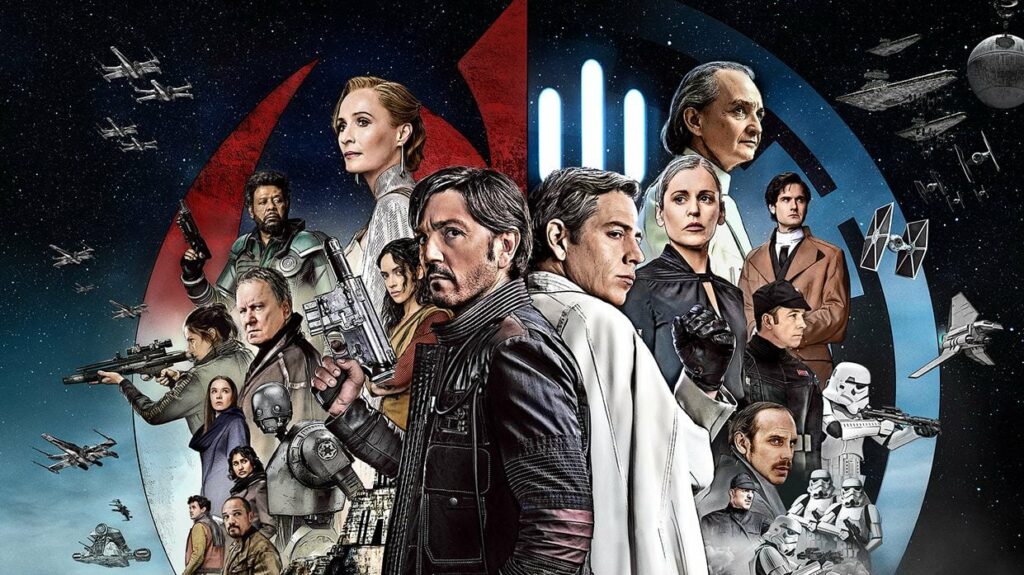
No Jedi, No Problem: Gritty Realism in a Galaxy Far, Far Away
Another way Andor breaks the Star Wars mold is its total absence of Jedi (and Sith) in the story. Traditionally, Star Wars media – whether movies, shows, or games – eventually bring in the Force-wielding space wizards or at least their iconic lightsabers. Andor boldly says, “Not this time.” As NPR noted in a review, “Unlike most of Star Wars’ other installments, Andor is a grittier story. There are no Jedi Knights – just ruthless officers of the Galactic Empire and rebels taking big risks to fight back.”. The series proves that the Star Wars universe can feel plenty “Star Wars” without a single lightsaber igniting. By focusing on the human-level struggle, Andor gives us espionage thriller tension and war drama stakes, but within a familiar galaxy of TIE fighters and Imperial overreach.
This grounded approach brings a new level of real-world resonance to Star Wars. Andor resonates as an allegory for how ordinary people resist authoritarianism and fascism. Watching villagers on Ferrix or prisoners on Narkina 5 band together against oppression can hit uncomfortably close to home – and that’s deliberate. The story carries echoes of real history and current events, making its victories and tragedies feel more impactful. It’s no wonder many viewers in 2025 felt Andor had “a new level of real-life resonance, echoing public conversations about how people can work collectively to resist fascism.”. By stripping away the fantasy elements, the show shines a spotlight on issues of power, corruption, and resistance in a way that even non-sci-fi fans could appreciate.
Yet Andor still very much feels like Star Wars. The Empire, though depicted with more bureaucratic banality and internal politics, is as evil as ever – perhaps even more frighteningly so for how realistic its tyranny is. And the Rebellion, at this point, isn’t an organized galactic army but a patchwork of cells and idealists who slowly find each other. In place of the Force, Andor shows faith in a different power: the power of individuals to spark change together. There’s a kind of spirituality in that idea too, even if no one is levitating rocks. A Polygon editor observed that whenever Cassian fights for something bigger than himself, it’s almost as if “the Force is on his side”, nudging events in his favor. The show doesn’t overtly invoke the Force, but it subtly pays homage to the notion that goodness and empathy have a gravity of their own in the galaxy.
Moreover, Andor enriches Star Wars by giving depth to people often overlooked in the saga. We see the everyday life of citizens under Imperial rule – from the corporate security grunts to the nervy Imperial intelligence officers and the fearful senators trying to do the right thing quietly (Mon Mothma’s tense storyline comes to mind). Even the “villains” in Andor are portrayed with nuance. Supervisor Dedra Meero of the ISB, for example, is terrifying in her efficiency yet oddly admirable in her determination – at times we almost root for her as she outsmarts her dismissive superiors. That’s intentional. Through a motley crew of new characters and some familiar faces, [Andor] purposefully explores the gray area between good and evil with deft nuance, Gilroy says. By understanding figures like Dedra as the heroes of their own story, Andor makes the conflict more compelling and realistic. In war, after all, each side thinks they’re justified.
The absence of Jedi also means Andor leans on strong writing and dialogue over spectacle – and it works brilliantly. Emotional speeches (like Nemik’s manifesto or Maarva’s funeral address) replace mystical prophecy, and mundane hardships (like scrambling to earn credits or suffering in prison labor) replace epic duels. This could have been a risk, but fans and critics embraced it. In fact, many have pointed out that Andor’s grounded tone calls back to what made the original Star Wars (1977) effective: a lived-in world where, initially, the only magic was people finding hope in each other. By showing that “hope” being kindled from the trenches, Andor deepens our understanding of the Rebel Alliance that Luke and Leia would later lead.
Connecting to the Wider Galaxy
While Andor blazes a new trail, it also connects to themes and characters from across Star Wars media. One obvious touchstone is Rogue One: A Star Wars Story, the film that first introduced Cassian Andor (and which Andor is a prequel to). Rogue One itself was lauded for giving us a more ground-level view of heroism – its band of rebels (Cassian, Jyn Erso, and their crew) were spies and grunts who accomplished something monumental without wielding the Force. Actress Felicity Jones famously described Jyn Erso, her Rogue One protagonist, as “a new kind of Star Wars hero”. Jyn wasn’t a wide-eyed newbie discovering her purpose like Rey or Luke; as Jones noted, “She’s not a character asking, ‘Who am I and where did I come from?’”. Jyn knew exactly who she was – a fugitive’s daughter with a chip on her shoulder – and that self-awareness propelled her journey. In many ways, Cassian in Andor picks up that same baton of the self-made, no-nonsense hero. He and Jyn are cut from similar cloth: both had rough childhoods, both navigate morally gray choices, and both ultimately sacrifice everything for the Rebellion’s cause. Neither was “chosen” by anything except circumstance and their own conscience.
Beyond Rogue One, Andor shares DNA with other Star Wars stories that put ordinary people at the forefront. Fans of the animated series Star Wars Rebels will recall that show also celebrated a small band of heroes – a makeshift family of rebels – many of whom (like pilot Hera Syndulla and ex-stormtrooper Zeb) weren’t Jedi either. Rebels maintained a pulpy, family-friendly adventure tone, whereas Andor skews more adult and gritty. But both show that the Rebel Alliance was built on everyday bravery. In the gaming realm, titles like Star Wars: Battlefront II introduced characters such as Iden Versio, an Imperial special forces operative who defects and becomes a rebel. Iden’s story in the game (and its tie-in novel) echoes similar beats: an ordinary (albeit elite-trained) person making a conscious choice to fight for what’s right, rather than being fated to it. And in Star Wars comics and novels, we’ve seen tales of Rebel spies, soldiers, and pilots – from the X-wing pilots in the old Rogue Squadron books to the gritty grunts of Twilight Company – that likewise embrace the idea that not all heroes carry lightsabers.
What sets Andor apart is how fully it commits to this perspective and how expertly it weaves it into the larger saga. The series doesn’t ignore the Star Wars lore; on the contrary, it enriches it. We see Mon Mothma clandestinely laying the groundwork for the Alliance’s political wing, adding weight to her appearances in Return of the Jedi and beyond. We witness the origin of Cassian’s trusty droid K-2SO (well, we will by Season 2) and understand the bond they share in Rogue One. There are even subtle nods to the Jedi and the Force, but used sparingly – for example, a mercenary tells Cassian that “luck” is the only reason he’s survived this long, and an old quote from Obi-Wan Kenobi (“In my experience, there’s no such thing as luck”) lingers unspoken in the air. Andor cleverly shows that the ideals of the Jedi (hope, compassion, resisting darkness) can live on in regular people, even if no one onscreen is moving objects with their mind.
By comparing Andor’s heroes to others across the Star Wars universe, we appreciate the balance the franchise now has. We have the mythic epic of the Skywalkers and the down-to-earth courage of characters like Cassian Andor. The Star Wars games, books, and shows that don’t focus on Jedi have often been beloved side stories; Andor elevates that approach to the main stage. It invites viewers who love the lore from every corner – whether you grew up with comics about Rebel pilots or you’re just a movie fan – to see how it’s all connected. When Saw Gerrera (originating from The Clone Wars animated series and appearing in Rogue One) shows up in Andor, for example, it’s not just a cameo; it underscores how the Rebellion had many factions and faces. Andor is uniquely positioned as a crossroads of Star Wars media: grounded enough for newcomers to latch onto the human story, yet rich with callbacks and deeper implications that longtime fans can recognize and appreciate.
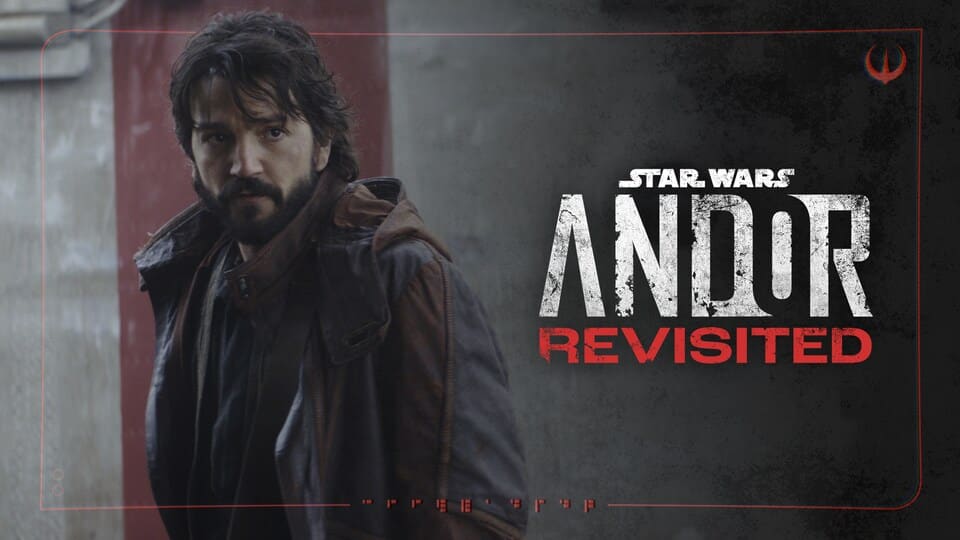
Conclusion: A New Heroic Legacy in the Galaxy
With its engrossing storytelling and focus on everyday citizens, Andor has expanded the definition of a “Star Wars hero.” The series proves that you don’t need to lift an X-wing with your mind to profoundly change the galaxy – sometimes lifting a hammer, a blaster, or even a brick will do if it’s in service of a righteous cause. By introducing a new breed of hero who is more human in scale, Andor has added a layer of depth to the Star Wars saga. The farmboy, the princess, and the smuggler will always have their place in our hearts, but now we also have the mechanic, the idealist, the prisoner, and the mother inspiring us too.
This approach has not only reinvigorated Star Wars storytelling, but it also resonates with our world. In an era where audiences crave authentic, relatable heroes, Andor delivers characters who feel real enough to step off the screen. They crack dry jokes, make mistakes, get scared, and find bravery at unexpected times – in short, they’re flawed and funny and real, just like us. And when they triumph, it hits that much harder because we know how hard-won and uncertain that triumph is.
The legacy of Andor’s first season, and Cassian Andor’s journey in particular, is a Star Wars narrative with the safety off. No one is protected by plot armor or born with an ancient prophecy. Yet hope still emerges – scrappy, improvised, and beautiful. It reminds us of a crucial Star Wars lesson that sometimes gets overshadowed by lightsabers and Emperors: that anyone can make a difference. A bravely spoken word can ignite a rebellion, a single shot can change the course of history, and an ordinary person can become a hero.
As we look forward to more stories in this galaxy, the heroes of Andor set a high bar for nuanced, heartfelt storytelling. They show that Star Wars can evolve and still feel true to its core. After all, rebellions are built on hope – and as Andor shows, hope is built on the courage of everyday folks. That’s a heroism worth celebrating from Ferrix to Coruscant, and here on our own Earth as well.


